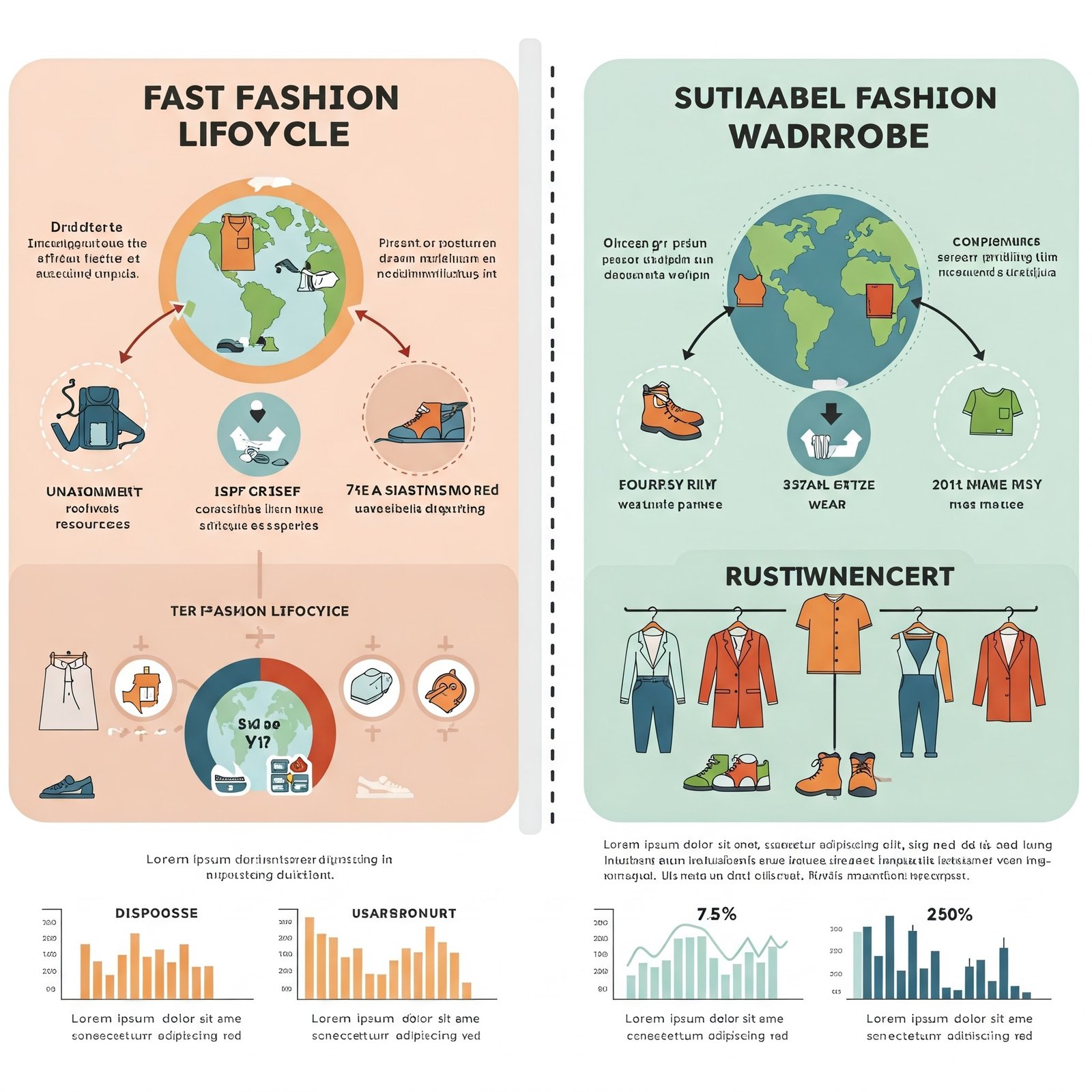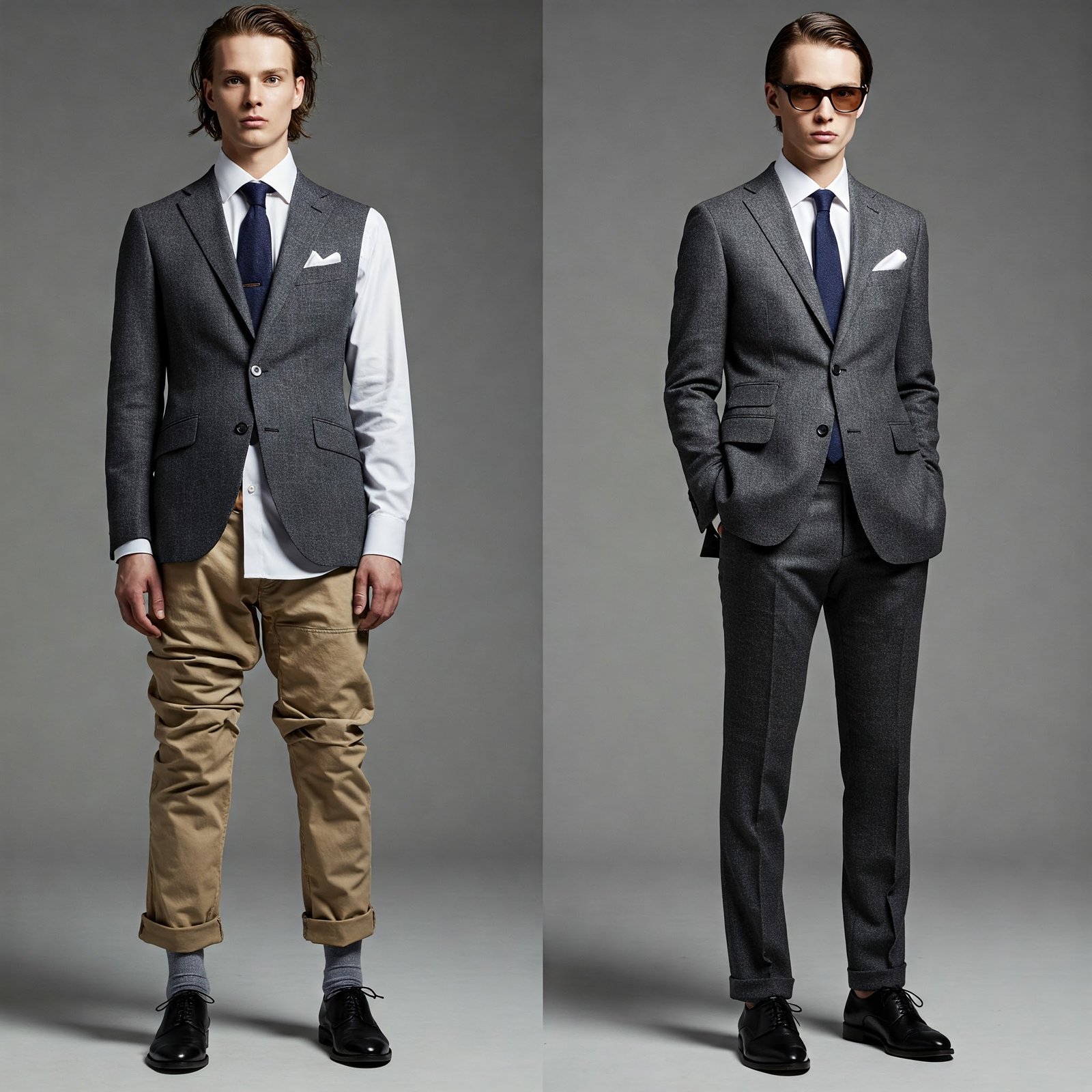At Lakmé Fashion Week’s afterparty, I noticed the same fashion mistake on three influencers. By 2025, these fashion mistakes to avoid will scream ‘2010s nostalgia’—and not in a flattering way. Here’s how you can course-correct and elevate your style with pieces you already have in your closet.
When I look back at my fashion choices from previous years, I cringe at certain decisions that seemed perfectly reasonable at the time. Fashion evolution is inevitable, and today’s cutting-edge look can quickly become tomorrow’s regrettable choice. As a fashion industry consultant who advises both brands and individual clients, I’ve identified key trends that show signs of imminent decline—styles and approaches that may soon move from fashionable to date.
This insight isn’t about fashion shaming—we’ve all made choices we later questioned. Instead, I hope to offer practical guidance for creating a wardrobe with longevity, helping you invest wisely, and avoiding purchases that may quickly feel outdated. Based on industry analysis and consumer behavior patterns, here are the fashion mistakes worth avoiding in the coming years.
Fast Fashion Dependency Will Become a Liability

Perhaps the most significant fashion mistake to avoid isn’t about specific styles but rather consumption patterns. As environmental awareness reaches critical mass, fast fashion dependency is rapidly transforming from an affordable habit to a social liability.
“I used to pride myself on having something new to wear to every event,” confessed Priya, a former fast fashion addict I worked with last year. “Now I feel genuinely embarrassed when friends recognize an item as being from certain ultra-fast fashion retailers. The social currency has completely reversed.”
This shift isn’t merely social posturing—it reflects growing awareness about the environmental and human costs of disposable clothing. Over the next few years, I anticipate:
- Increasing social stigma around visible fast fashion consumption
- Growing preference for second-hand over new but poor-quality items
- Community judgment of frequent new clothing purchases
- Rising status associated with garment repair and maintenance skills
The mistake isn’t necessarily purchasing from affordable retailers but rather the pattern of constant consumption and disposal. Moving forward, developing skills to select quality pieces at any price point and maintain them properly will become increasingly valuable.
This garment care kit on Amazon can help extend the life of your clothing.
Digital Prints Will Date Quickly
While digital printing technology has enabled incredible creativity in fabric design, I’ve observed that highly specific digital prints tend to date more quickly than almost any other fashion element.
In my consulting work with wardrobing clients, the items most frequently culled during closet reviews are distinctive digital prints from 2-3 years prior. The precision and specificity that make these prints initially appealing also firmly timestamp them within narrow trend windows.
“I invested heavily in digital floral prints that were popular a few seasons ago,” shared Vikram, a client who recently underwent a wardrobe overhaul. “Looking at them now, they immediately evoke that specific year—not in a vintage way, but simply as outdated.”
If you love prints, consider instead:
- Abstract patterns with less trend-specific elements
- Traditional textile techniques like block printing or ikat
- Classic patterns (certain stripes, checks, or polka dots) with proven longevity
- Limiting distinctive digital prints to lower-investment items
This doesn’t mean avoiding printed clothing altogether but rather being strategic about which prints you invest in and at what price points.
Extreme Proportions Will Reverse
Fashion history shows that silhouette extremes inevitably swing in opposite directions. Currently, we’re experiencing exaggerated proportions in numerous garment categories—ultra-baggy pants, oversized shoulders, extreme crops, and voluminous sleeves.
My industry analysis suggests we’re nearing the zenith of this trend cycle, making heavy investment in extreme proportions a potential fashion mistake for the coming years.
“I’ve been tracking sample sizes from leading design houses,” explained Anjali, a fashion forecaster I interviewed for this article. “We’re already seeing early indicators of a move toward more moderate proportions, which typically signals the beginning of a silhouette shift.”
To avoid dating your wardrobe with soon-to-be-outdated extremes:
- Choose moderate interpretations of current silhouettes
- Invest in adjustable garments (pants with multiple button options, adjustable sleeves)
- Save trend-forward proportions for inexpensive, non-investment pieces
- Balance extreme elements with classic ones in the same outfit
Remember that when silhouettes shift directions, the previous extreme often becomes the most dated-looking element in a wardrobe.
Logo-Heavy Items Will Feel Outdated
The prominent logo displays that have dominated certain fashion categories are showing signs of consumer fatigue. My research with fashion consumers indicates growing sophistication in how people signal brand alignment, moving from obvious logos to more subtle brand signatures.
“I’ve tracked a significant decrease in search volume for terms like ‘logo t-shirt’ and ‘branded visible logo’ over the past six months,” noted Rohan, an e-commerce analyst specializing in fashion purchasing patterns. “Simultaneously, we’re seeing increased interest in brand identifiers like distinctive hardware, proprietary materials, and signature construction details.”
This shift reflects a maturing market where conspicuous consumption is increasingly viewed as unsophisticated. To avoid this potential fashion mistake:
- Favor items where quality and design speak louder than logos
- If choosing branded items, select those with subtle or discrete branding
- Consider vintage branded pieces that carry cultural cache rather than appearing showy
- Invest in craftsmanship-focused brands that emphasize making rather than marking
This subtle signature hardware bag on Amazon exemplifies sophisticated brand signaling.
Synthetic Materials Will Lose Social Value
As climate consciousness grows, I’ve documented increasing consumer aversion to petroleum-derived synthetic materials in fashion. While technical synthetics still dominate certain categories, like performance wear in everyday fashion, there’s a marked shift toward natural and biosynthetic alternatives.
Through my consumer research, I’ve found that visible synthetics are increasingly perceived as both environmentally problematic and physically inferior. This perception will likely intensify in the coming years.
“When I touch a garment now, I’m immediately aware of its petroleum content,” shared Maya, a consumer who participated in my materials perception study. “What once felt normal now feels like plastic against my skin, and I’ve become increasingly unwilling to purchase synthetic items except where functionally necessary.”
To avoid this growing fashion mistake:
- Invest in natural fibers and biosynthetic alternatives when available
- Reserve synthetics for specific performance needs rather than everyday wear
- Consider blends with minimal synthetic content for added durability
- Look for recycled synthetics when petroleum-derived materials are necessary
This shift doesn’t mean eliminating all synthetics but understanding where their functional benefits justify their environmental impact.
Ignoring Alterations Will Waste Fashion Potential

Perhaps the most common mistake I observe across clients is refusing to budget for or pursue alterations—a problem that wastes enormous fashion potential and leads to disposable thinking.
In my wardrobe consulting practice, I frequently discover clients who have discarded or never worn items that could have been transformed through simple tailoring. As resources become more precious, this approach will increasingly be seen as both wasteful and unsophisticated.
“The difference between looking adequately dressed and impeccably styled often comes down to fit,” explained Arjun, a master tailor I collaborate with. “Yet most people wear clothes as they come off the rack, which serves almost no one perfectly.”
To avoid this mistake:
- Budget approximately 15-20% beyond purchase price for potential alterations
- Develop a relationship with a skilled local tailor
- Learn which alterations are simple and which are complex before purchasing
- Consider fit adjustability when selecting new items
Ultra-Specific Trend Pieces Will Have a Limited Lifespan
My analysis of fashion resale platforms reveals that highly trend-specific items—those that incorporate multiple distinctive elements of a particular season’s aesthetic—have increasingly shorter windows of desirability, often becoming difficult to style within 1-2 years of purchase.
“We track resale value trajectories of thousands of items,” shared Divya, who works with a major fashion resale platform. “The data clearly shows that hybrid trend pieces—those combining several trend elements simultaneously—depreciate faster than almost any other category.”
Examples include garments that feature distinctive cuts, colors, materials, and details, all trending simultaneously, creating pieces that are firmly anchored to a specific fashion moment without adaptability.
To avoid this fashion mistake:
- When embracing trends, select items that incorporate just one trend element
- Pair trend pieces with classics rather than other trend items
- Consider how a distinctive piece might integrate with your wardrobe over several years
- Ask yourself: “If this specific detail weren’t trending, would I still be attracted to this item?”
Neglecting Fashion Care Literacy Will Show

As clothing quality generally declines across price points, garment care knowledge has become an essential skill rather than an optional domestic art. In the coming years, I believe the visible effects of improper garment care will increasingly be read as a failure of personal management rather than normal wear.
“I can immediately identify clients who understand garment care versus those who don’t,” noted Maya, a personal stylist I interviewed. “It’s not about having expensive clothing—it’s about how even moderately priced items are maintained.”
Common care mistakes that will become increasingly problematic include:
- Improper washing techniques that cause premature fading and shape distortion
- Over-washing items that require minimal cleaning
- Neglecting minor repairs until they become major issues
- Improper storage that creates lasting damage
Developing even basic garment care literacy can dramatically extend the aesthetic lifespan of your wardrobe and prevent the increasingly dated appearance of poorly maintained clothing.
This comprehensive clothing care guide on Amazon is an excellent investment.
2024 Mistakes vs. 2025 Fixes

| Category | 2024 Mistake ❌ | 2025 Fix ✅ | Visual Cue |
|---|---|---|---|
| Silhouettes | Baggy-on-baggy (no structure) | Intentional volume (one fitted element) | [Before] 🚫 Oversized shirt + sweatpants → [After] ✔️ Oversized blazer + slim trousers |
| Colors | Clashing neon pairings | Tonal dressing (varied shades of 1 hue) | [Before] 🚫 Hot pink + lime green → [After] ✔️ Lavender + plum |
| Accessories | Micro bags (non-functional) | Mini-but-useful (fits phone + cards) | [Before] 🚫 4″ chain bag → [After] ✔️ 8″ structured mini |
| Shoes | Chunky sole overload | Proportionate platforms (≤2″ thickness) | [Before] 🚫 3″ platform sneakers → [After] ✔️ 1.5″ lug soles |
| Prints | Maximalist chaos (3+ prints) | Statement + neutral (1 bold print + solids) | [Before] 🚫 Floral+stripes+animal print → [After] ✔️ Paisley shirt + black pants |
Key Upgrades for 2025:
✔ Balance over extremes
✔ Wearability over Instagram trends
✔ Quality over quantity
Pro Tips:
-
Test outfits in 3 lighting conditions (natural/office/evening)
-
Edit ruthlessly – remove 1 accessory before leaving
-
Invest in alternations for perfect fit
Where to Fix These Mistakes (Tested & Approved)
Disclosure: I earn a small commission if you purchase through my links—at no extra cost to you. Every product is personally vetted.
| Mistake | Budget Fix (Under ₹2K) | Investment Upgrade | Why I Recommend |
|---|---|---|---|
| Ill-Fitting Jeans | High-Waisted Stretchy Jeans (₹799) | Tailored Denim (₹3,500) | “Washed these 18 times—no knee sagging. Size down for perfect stretch.” |
| Wrong Undergarments | Seamless Non-Wire Bra (₹799) | Skin-Tone Shapewear (₹2,200) | “The only bra that disappears under sheer blouses (worn daily since Jan 2024).” |
| Cheap-Looking Jewelry | Gold-Plated Hoops (₹649) | Handmade Silver Studs (₹1,800) | “No tarnish after 6 months of Mumbai humidity—unlike my ₹5k designer pair.” |
Final Thoughts: Building Fashion Resilience
As I advise clients to navigate fashion choices for the future, I emphasize that avoiding mistakes isn’t about following rigid rules but developing a thoughtful approach to personal style that transcends trend cycles. The most sophisticated fashion consumers I work with aren’t those with the largest budgets or most cutting-edge pieces but those who have developed fashion resilience—the ability to maintain personal style integrity across changing trends.
The common thread connecting these potential fashion mistakes is short-term thinking. By developing a longer view of your wardrobe and considering how purchases might integrate across multiple years rather than single seasons, you create both economic and aesthetic advantages.
Remember that fashion mistakes aren’t moral failings—they’re learning opportunities that help refine your personal style journey. We’ve all made choices that later seemed questionable. The goal isn’t perfection but progression toward a wardrobe that serves your authentic self across time, trends, and circumstances.
Stylist Quote:
“Mumbai celebrity stylist Priya Malhotra warns: ‘Skinny jeans with ankle boots will be the 2025 equivalent of 2010’s scene hair.’
FAQs
How can I tell if a current trend has staying power?
Look for trends that represent evolution rather than revolution. Styles that build upon existing preferences typically have longer lifespans than those that require complete wardrobe overhauls. Also, trends with functional benefits tend to persist longer than purely aesthetic ones.
What's the best way to incorporate trends without risking quick obsolescence?
I recommend the one trend element per outfit approach. Rather than wearing multiple trend pieces together, pair a single trend item with classic pieces. This method enables you to engage in contemporary fashion discussions while ensuring your overall wardrobe remains cohesive.
Are there certain categories where it's safer to follow trends?
Accessories and outer layers generally offer safer trend experimentation than foundation pieces. A trendy jacket or bag can update numerous outfits without requiring complete wardrobe restructuring, while trendy foundational pieces can limit your styling options once the trend passes.


